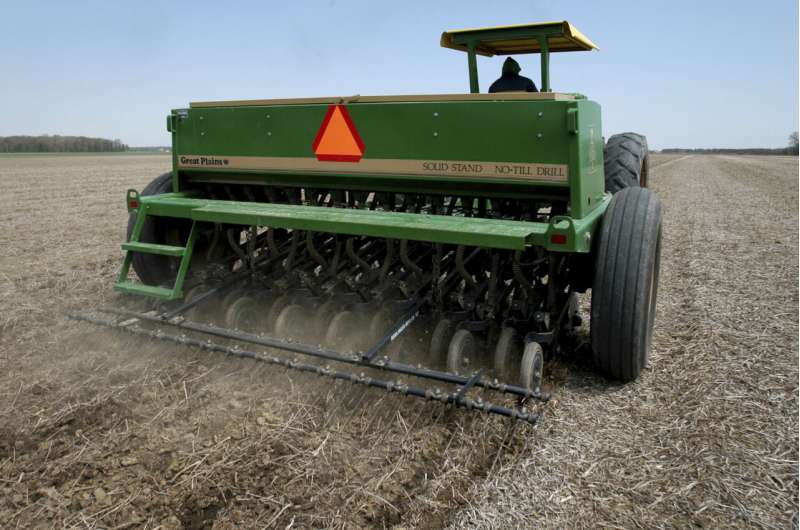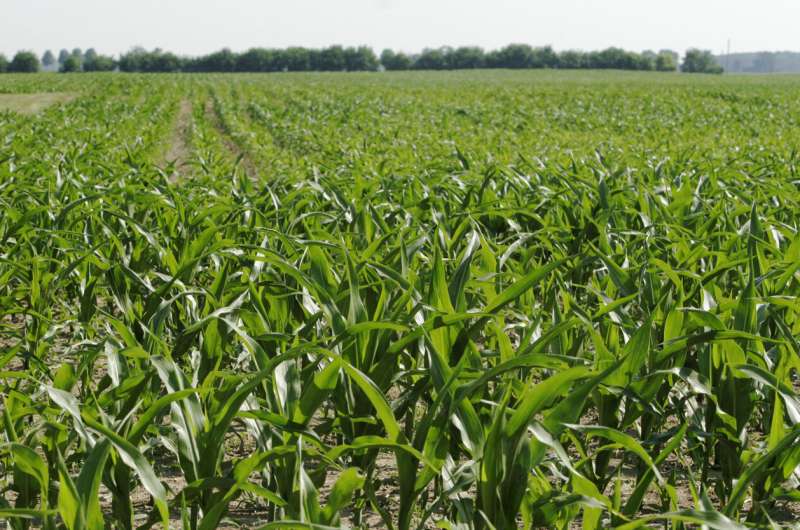This article has been reviewed according to Science X's editorial process and policies. Editors have highlighted the following attributes while ensuring the content's credibility:
fact-checked
reputable news agency
proofread
Researchers find a tiny organism has the power to reduce a persistent greenhouse gas in farm fields

In the world of greenhouse gas emissions, carbon dioxide gets most of the blame. But tiny organisms that flourish in the world's farm fields emit a far more potent gas, nitrous oxide, and scientists have long sought a way to address it.
Now some researchers think they've found a bacteria that can help. Writing in this week's Nature, they say extensive lab and field trials showed the naturally derived bacteria reduced the nitrous oxide without disrupting other microbes in the soil. It also survived well in soil and would be relatively cheap to produce.
"I think that the avenue that we have opened here, it opens up for a number of new possibilities in bioengineering of the farmed soil," said Lars Bakken, a professor at the Norwegian University of Life Sciences and one of the authors of the study.
A pound of nitrous oxide—better known as laughing gas, the stuff that relaxes people in the dentist's chair—can warm the atmosphere 265 times more than a pound of carbon dioxide, and it can persist in the atmosphere for more than a century. Farmers' heavy use of nitrogen fertilizer drives up the amount produced in soil, and in 2022 it accounted for 6% of all U.S. greenhouse gas emissions from human activities, according to the Environmental Protection Agency.
Reducing fertilizer use can help, but crop yields would eventually fall.
That's a big problem in agriculture, "so the fact that they have developed a unique strategy to reduce it pretty dramatically was really interesting," said Lori Hoagland, a professor of soil microbial ecology at Purdue University who was not involved in the study.
Bakken and his colleagues used organic waste to grow their bacteria, reasoning that many farmers already apply processed manure-based fertilizers so it could be easily integrated into their routines. Building on past work, they searched for a microorganism that would last long enough to make a real dent in nitrous oxide emissions without staying in the soil so long that it disrupted other tiny life forms that are often vital for crop health.
In field trials, they used roving robots to measure nitrous oxide emissions day and night, comparing conditions in soil with and without the bacteria. They found the bacteria reduced the nitrous oxide emissions of an initial fertilizer application by 94%, and a couple weeks later, dropped the emissions of a subsequent fertilizer application by about half. After about three months, there was no difference in the makeup of microbial life forms, suggesting their bacteria wouldn't disrupt the soil.
The bacteria they settled on—Cloacibacterium sp. CB-01—is found naturally in anaerobic digesters, machines that are already being used to transform organic waste products like cow manure into biofuels. The fact that the bacteria is not genetically modified might ease its acceptance and adoption, said Paul Carini, a soil microbiologist at the University of Arizona who was also not involved in the research.

Bakken said the bacteria could be included in certain fertilizers on farms as soon as three to four years from now if the economics make sense.
Carini thinks they do.
"Any time you're using a waste product from one industry to benefit another industry, that's pretty cost effective," he said.
However, Bakken pointed out that farmers aren't paid for reducing nitrous oxide emissions, and he thinks there have to be more incentives to do so. "The task for the authorities is to install policy instruments that make it profitable in one way or another," he said.
Hoagland, the Purdue professor, said more research in field conditions would likely be needed before the bacteria could be deployed worldwide, as there are many different types of farm soils.
"If they can get this to work across soils and things, it would just have a tremendous impact, for sure," she said.
It's a challenge that has long vexed academics as well as major agricultural companies that have tried to develop organisms that can be added to the soil for beneficial effect, Carini said. He said that where many inquiries in this direction have been spotty, this one had clearer results.
Like Hoagland, he said more work is needed to prove the bacteria's effectiveness. But he called the work a blueprint for selecting beneficial organisms that can be added to soil.
"I think this is the next frontier in soil agriculture research," he said.
© 2024 The Associated Press. All rights reserved. This material may not be published, broadcast, rewritten or redistributed without permission.





















